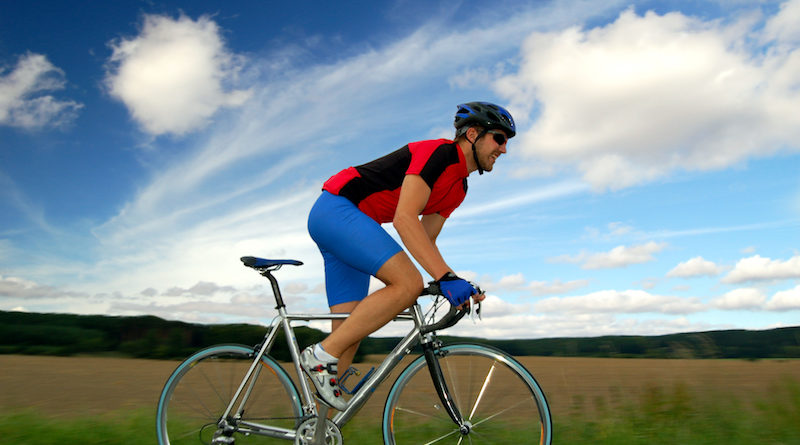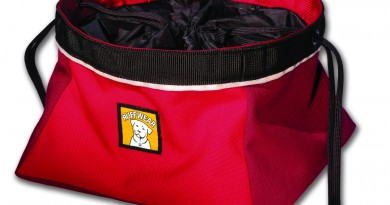The Secret to a Perfect Bike Fit
Bike not feeling right? These tips from Vermont’s bike fit Experts will help you get more power—with less pain.
BY BENJAMIN GLASS
We’ve all been there: a strain in your hamstring, a sore back, a constant cramp in your glutes—sometimes after only a few miles in the saddle. And then there’s that century ride coming up. Do you really want to be out there for that many miles on a bike that doesn’t quite feel right?
If you’re like most riders, you often blame the bike for these painful symptoms. The good news? There are plenty of adjustments you can make to your setup that will alleviate pain and increase your efficiency.
Several shops around Vermont specialize in bike fitting. Their experts can tailor fit your existing bike to your riding style and body dimensions. Some do so using sophisticated software applications and hardware setups. And many shops won’t sell you a bike until they’ve had a chance to make sure it’s the right geometry.
“Sometimes we see people coming in who want that sleek racing bike with the low stem and race profile—but they also want to ride comfortably over a long distance and that may mean a different geometry. Fortunately, the newer bikes are made for endurance riding and are, generally, way more comfortable than they were 10 years ago,” says Jason Boczar of Earl’s Cyclery in Williston.
There are also some simple adjustments you can make at home. These might range from a new saddle to adjusting your pedals or using orthotics in your shoes. So before you head out on that next century ride or gravel grind, take some time to make sure your bike fit is dialed in.
It’s All About the Base
Your butt not only rests at the physical center of the bike, but also at the psychological heart of your riding experience.
“The saddle is the foundation of support for all your levers,” says Diny Sweitzer of West Hill Bike Shop in Putney, Vt. “If you’re not sitting comfortably, then you can’t pedal comfortably.” Over the years, Sweitzer has seen numerous cases of improper saddle positions.
“I see this a lot in women, where their pelvises are tilted back,” she says. Skewing the sitting position restricts muscles from functioning properly, making it hard for the rider to apply power to the pedals, and can cause upper body pain. “A lot of times these [women] come in looking for stem reach fixes. Instead, I end up correcting their saddle position.”
Josh Martell of Equipe Sport in Rawsonville says saddle width is a dimension to consider as well. “If the saddle is too narrow, your ride will be uncomfortable,” he says. “On the other hand, if it’s too wide, you’ll get too much hip pressure.”
Although most cyclists have their own tried-and-true methods for making saddle adjustments, both shop employees offered their own.
“To start, try to make your saddle angle flat, by drawing an imaginary line from the saddle to the stem,” says Martell. For the majority of riders, excluding some mountain bikers, a flat saddle will distribute a rider’s weight onto their butt and off of their hands, while also decreasing the chances of sliding forwards or backwards.
Once the saddle is flat, try adjusting the seat height. Sweitzer recommends using the “heel test.” In a stationary position, either using a trainer or having another person hold your handlebars and support the bike, pedal backwards with your heels on the pedals. A proper saddle is high enough for your leg to extend fully in this position, yet is set just below the point where your hips begin to “rock.” Hip movement is caused by the need to elongate your lower body in order to reach the bottom of the pedal stroke. This can lead to discomfort, knee pain and worse.
“Often, when you have the saddle 100-percent in the right position, everything else falls into place,” said Sean Whipskey, of Skirack in Burlington. A properly fitted seat will not only increase muscular efficiency and pedaling power, but also reduces the chance of stress-related injuries, and produces a more enjoyable riding experience.
Adjust your Reach
With a properly fitted saddle, your bike’s reach (the distance from the saddle to the stem) is a good next measurement to consider. Martel noted that this is something riders have agency over.
“Some people like to have themselves fully stretched out or hunched up,” he said. “A shorter stem brings the center of the handlebars behind the front axle, which will make the bike more responsive. A longer stem will do the opposite, pushing the bars in front of the axle, making the bike more stable on a straightaway.”
Sweitzer cautions against aggressive reach positions. “I hear a lot of complaints about numb hands and necks and shoulders,” said Sweitzer. “The geometry of most new bikes is forgiving for less athletic people, but when I see [upper body discomfort], I try to move the rider’s center of gravity back and take weight off the upper body and put it onto the butt.” Sweitzer noted this could be as simple as moving the saddle farther back, lightening the rider’s upper body load.
Martel says adjustable stems (ones which can be raised or lowered by the rider to fit their current needs) are a piece of equipment to consider.
“We get a lot of older couples coming into the shop with back pain because they are too hunched over,” says Martell. They just want a more comfortable ride. We’ve done a quick [adjustable] stem fix that has really solved everything.”
Sweitzer also brought up mountain bike tips that are important to consider.
“The ability to maneuver your body and hover over the bike has become ever more important in mountain biking,” said Sweitzer. “If you are riding with a newer geometry in an off-saddle position, you want to be able to lunge forward so that your chest is over the stem and steering tube. You want to be in this position very comfortably.” This may be as simple as shortening a stem or finding a different saddle that allows you to get out of the sitting position faster.
“Handlebars come through wide,” she also said. “One tip is: don’t jump right into cutting handlebars until you’ve ridden them because wide bars help control the front wheel.”
Call in the Pros
If you are looking for a custom fit, find a shop that does a thorough two-hour-plus long fitting session, where the customer can discuss their needs and riding style, have their body measurements recorded and work with a pro fitter to tweak any problem areas.
“The biggest problem I see is in generalizing, trying to find universal solutions to problems,” says Ian Buchanan, founder of Fit Werx in Waitsfield. “It’s easy to find a piece of information somewhere that applies to a segment of the population, but that won’t apply to your situation. Saying, ‘this is where your saddle should be’, or ‘this is where your stem should be’ is a dangerous game without really knowing the individual who is riding.”
Many shops have fitting technology and nearly all recommend a free fit analysis before you buy a bike.
In 2018, Skirack installed a Retül Match system—a free “bike dating” system they use to better set riders up with bikes, shoes and gear. The system lets the shop pro digitally trace everything from the shape of your foot to the length of your torso or legs and then input it into the Match Tower to help determine what shoes, bikes or other gear might suit your body type the best.
For a more elaborate fit, both Earl’s and Fit Werx use Purely Custom’s Size Cycle—a highly adjustable platform with a seat, pedal and stem set up as they would be on a regular bike. The system uses digital measurements and software to analyze your body position, cycling patterns and how those impact your power output on the bike.
If you are buying a new bike, the cost of a custom fit is usually bundled in but if you want a custom fit for your existing ride, Earl’s charges $150. At Fit Werx, a bike fit costs $350 and customers get $200 of their fit back as credit towards a new bike purchase anytime in the future.
Fit Werx founder Ian Buchanan has worked with thousands of riders in his career, including ex-pro Ted King and triathlete Donna Smyers, and now has Fit Werx shops in four states, as well as the headquarters in Waitsfield. “Our fits take two to four hours and include a complete postural and technique analysis with video,” says Buchanan. “The fitting information from an ‘Existing Bike Fit’ can help riders find the bike that fits them best before they buy,” notes Buchanan.
With that said, Buchanan is an optimist when it comes to tweaking an existing setup.
“The times where there is nothing you can do to make your bike better are very few,” he says. “Even if the bike is not a complete match for the person, there is almost always something you can do.”
Intern Benjamin Glass is a member of the Middlebury College cycling team.




If you’re experiencing pain or injury from your bike then your health insurance will cover bike fit with cyclingdr.com!